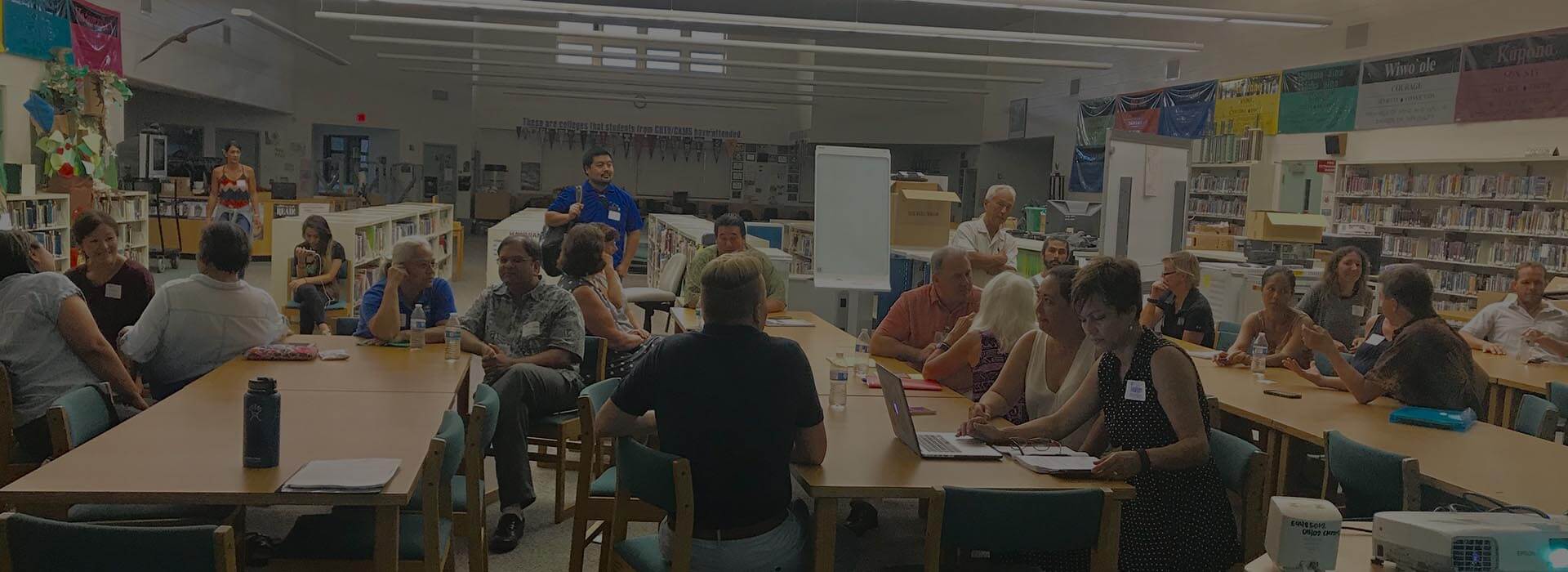A diverse group of community leaders representing government, business, social services, education, healthcare, and the environment helped launch KPAA in 2002. Initially sponsored by the Garden Island Resource Conservation and Development, Inc. (GIRC&D) and the Rural Champion Community (RCC), KPAA’s roots go back to the 1998-2000 General Plan Update process.

History & Mission
Missioninitial
planning
Consultants Roxanne MacDougall (not pictured) and Nadine Nakamura, with help from community members such as Barbara Robeson, Beryl Blaich and Lucy Kawaihalau, guided KPAA’s initial planning.
The need for island-wide collaboration to strategically plan, leverage resources, and take action on priority projects on Kauai became apparent. There was agreement that a working partnership of government, business, and community to jointly plan and implement projects would yield far greater results than any one entity working on its own. This premise underlies the vision for KPAA.
The first priority issues were selected in April 2003, and the first staff was hired in August 2003. Kauai Planning & Action Alliance became a 501(c)(3) corporation in December 2004. Initially, our programs supported four key community-based values included in the Kauai General Plan 2000.
Today, we are focusing our efforts on the critical need to prepare our young people for success, to be sure they are ready to learn and ready for life. Building Kaua`i’s foundational resource – our young people – will insure that they have the opportunity to achieve a robust quality of life for themselves and their ohana. In addition, Kaua`i will be positioned with a strong, diverse workforce who will care for our aina and help our island economy thrive.
Our
Mission
To bring together diverse organizations for collaborative planning and action to achieve targeted community goals.
We carry out our mission by fostering creative solutions and aligning efforts among those who shape the destiny of our island:
- Providing a safe and open forum for dialogue.
- Setting priorities based on current data and indicators.
- Collecting and publishing indicators data on trends, progress, and outcomes related to our priorities.
- Targeting specific actions and being committed continuous improvement to reach them

